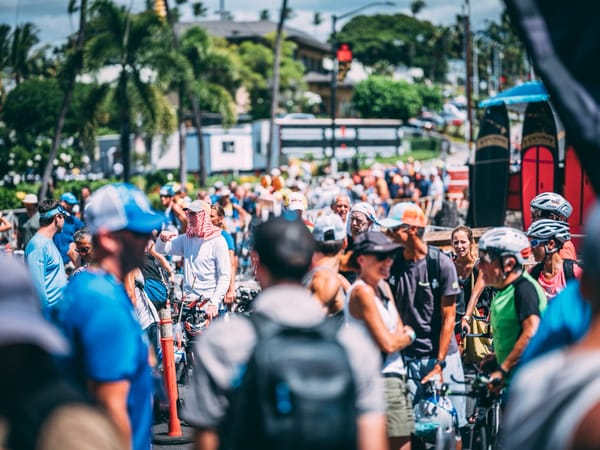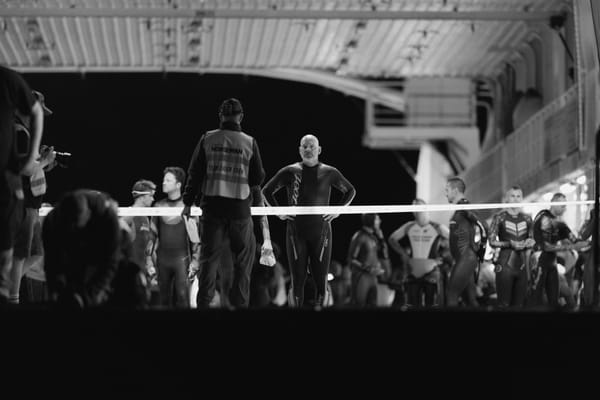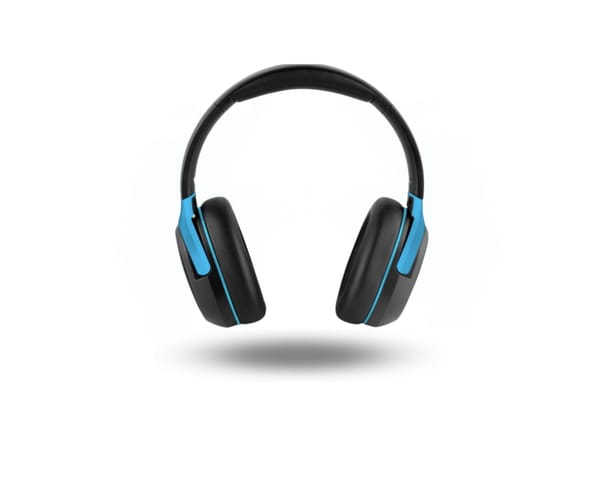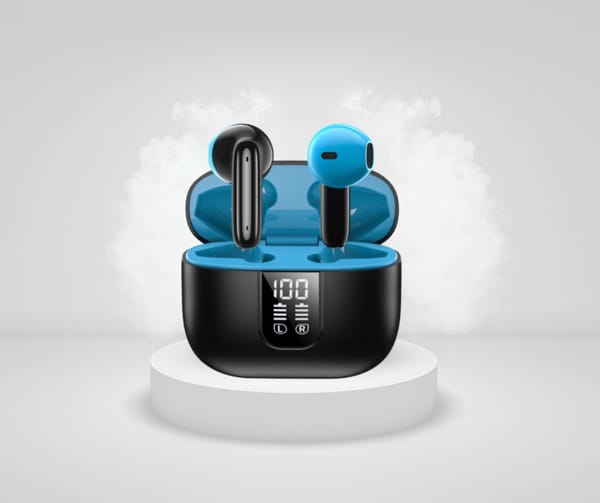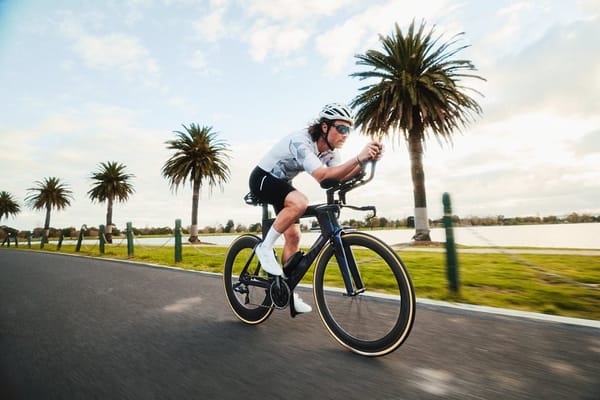
Meet Brody Searle, an everyday individual who turned his life around in a breathtaking manner. Six months ago, Brody was more likely found on his couch than in any sporting arena. Today, he stands as an Ironman competitor—a testament to extraordinary physical and mental endurance. However, Brody's transformation is not just about athletic achievement; it's a story of a man driven by an unyielding desire to push his limits and make a significant impact.
Brody's life is defined by challenges and the relentless pursuit of what lies beyond the conceivable. Known for his thrill-seeking spirit—Brody loves exploring the unexplored, tackling what seems impossible and connecting with others who share his zeal for self-improvement. But his journey is also about balance; the same man who seeks adrenaline also appreciates quiet moments of simplicity, allowing life to unfold at its own pace.
What propels a person to leap from comfort into the grueling world of Ironman training? For Brody, it was not just about testing his physical limits but also about fulfilling a deep-seated need to contribute meaningfully to society. Brody chose this challenge not only to prove his resilience but also to use this platform to support a charity that offers hope and help to those in need.
As we delve into Brody’s journey, we explore his rigorous physical preparations and the mental strength required to undertake such a challenge. Also, we delve into the emotional landscape of a man who views every day as an opportunity to excel and every hardship as a chance to learn and grow. This article will trace Brody's evolution through the highs and lows of his training, the community that shaped his journey and the race that tested his limits in unimaginable ways. Join us as we explore how Brody Searle went from the tranquility of his living room to the finish line of the Ironman, transforming his life and inspiring others through his dedication and perseverance.
Starting Point
Before diving headfirst into his Ironman journey, Brody Searle's life was comfortably nestled between his professions as an osteopath and a freelance videographer. His daily routine revolved around work commitments and a sprinkling of creative endeavours. While Brody's younger years featured dashes of athleticism in football and sprinting, the world of endurance sports was a distant reality. Notably, it had been over three years since he'd engaged in any serious cardio workouts.
Brody's regular fitness regimen was primarily centered around weightlifting, hitting the gym about four times a week. He enjoyed maintaining an active lifestyle but the extreme demands of a triathlon seemed beyond his typical pursuits. Particularly intimidating was the prospect of swimming—Brody had always kept a cautious distance from water, avoiding swimming carnivals in school due to his lack of confidence in the water.
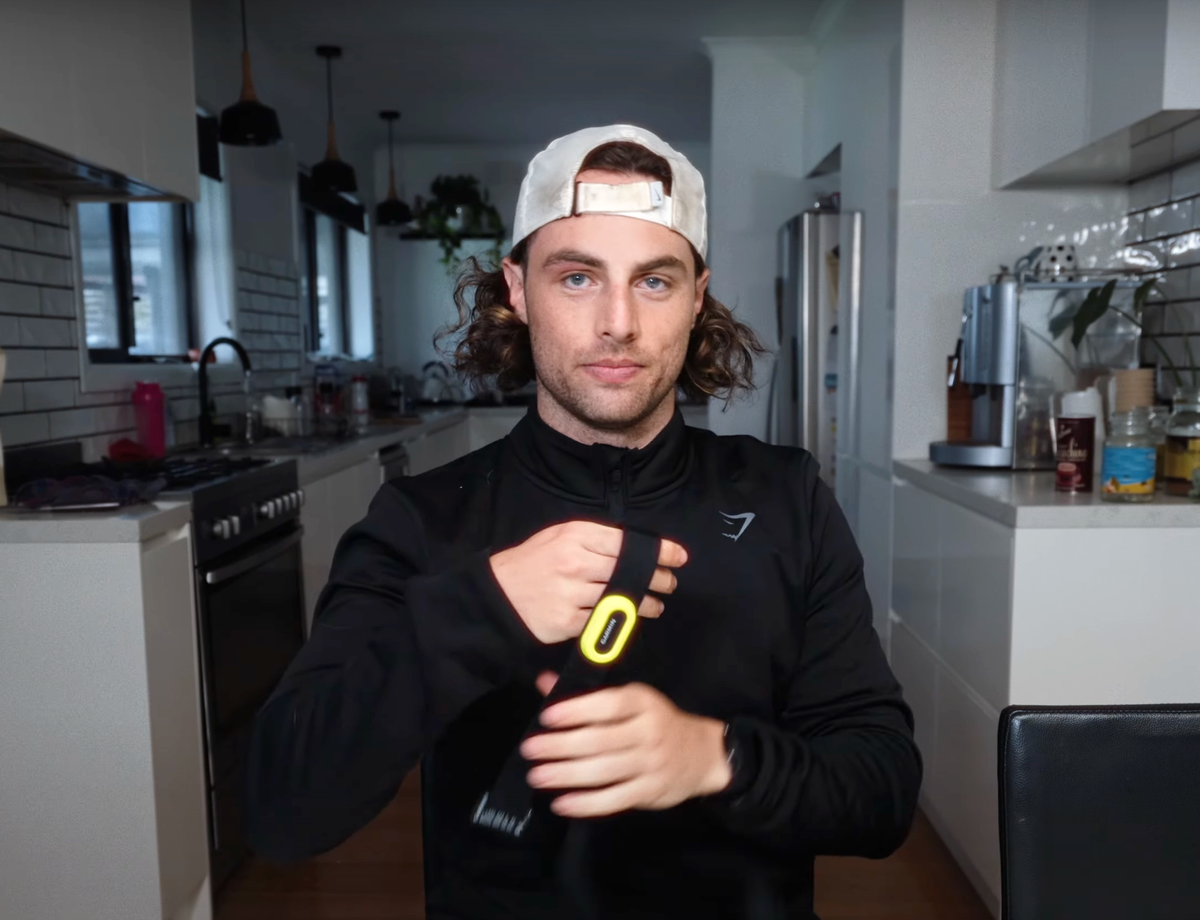
The pivotal moment that shifted Brody's trajectory came during a chance meeting with Zac Pettit, the founder of T2KO, in June 2023. Zac had initiated T2KO in memory of his best friend, Zayn, who tragically passed away from osteosarcoma. The organisation's mission was to raise awareness and support for those battling this rare cancer. Brody was profoundly touched by Zayn's story and Zac's dedication. Inspired, he saw an opportunity to contribute meaningfully to this cause. The audacious idea of completing an Ironman to support T2KO sparked within him.
Brody was familiar with setting ambitious goals—his past experiences had taught him the value of aiming high, even if those goals seemed daunting or unrealistic at first. This mindset was a cornerstone of his identity, having once prioritised getting a skydiving license over a driving license for the sheer challenge and uniqueness of the endeavor. Now, facing the prospect of an Ironman, Brody was driven by a similar mix of thrill-seeking and a profound commitment to making a difference.
Despite initial doubts and nerves, once Brody publicly committed to the Ironman on 1st October 2023, there was no turning back. With just seven months until race day, he was fully invested. This commitment to take on the most challenging experience of his life was not just about personal achievement but was also a testament to his belief in serving a cause greater than himself. Brody was ready to show that with determination, resilience, and a bit of courage, the seemingly impossible could indeed become possible.
Training Regime
Brody's Ironman training journey was a gradual progression from building a base to race-specific preparation. In the first few weeks, the focus was on developing consistency and allowing his body to adapt to the new stresses of swimming, biking, and running.
Initial weeks (Month 1-2):
- Swimming: 2-3 sessions per week, learning proper technique
- Biking: 3 sessions per week, mostly easy rides to build endurance
- Running: 3 sessions per week, gradually increasing distance
- Strength training: 2 full-body gym sessions per week
During this phase, Brody faced several challenges. Swimming was the most daunting discipline, as he struggled with breathing and efficiency in the water. He sought advice from experienced swimmers and watched numerous YouTube videos to improve his technique. On the bike, Brody had to get used to spending long hours in the saddle and managing his nutrition and hydration. With running, he initially battled shin splints and sore joints as his body adjusted to the impact.
As the weeks progressed, Brody slowly ramped up the volume and intensity of his training. He incorporated interval sessions, hill repeats, and brick workouts (combining two disciplines back-to-back) to build specific fitness for the demands of triathlon.
Middle months (Month 3-5):
- Swimming: 3-4 sessions per week, alternating between technique work and endurance sets
- Biking: 4-5 sessions per week, mixing long rides (3+ hours) with interval training
- Running: 4 sessions per week, including a long run and a speed session
- Strength training: 1-2 maintenance sessions per week
By the middle of his training block, Brody was logging impressive hours: 9+ hours of biking, 5+ hours of running, and 7+ hours of swimming per week.
Final buildup (Month 6-7):
- Swimming: 4-5 sessions per week, building to race distance (3.8km) in open water
- Biking: 5-6 sessions per week, focusing on race-pace efforts and longer rides (6+ hours)
- Running: 5 sessions per week, including race-specific long runs and brick sessions
- Strength training: Mostly replaced by swim/bike/run volume
In the final months, Brody's training closely mimicked the demands of an Ironman. Brick sessions became a weekly staple to train his body for the bike-to-run transition.
Throughout the 7-month buildup, Brody had to manage fatigue, niggles, and the mental challenges of such a daunting goal. But with each week, he grew stronger and more resilient. By the time race week arrived, Brody had transformed himself into a bona fide Ironman-ready triathlete.
Nutrition and Recovery
As Brody dove into his Ironman training, he quickly realized that proper nutrition and recovery were just as crucial as the workouts themselves. He made significant changes to his diet to support the demands of endurance training and optimize his performance.
Nutrition
- Increased caloric intake to fuel long training sessions and promote recovery
- Focused on whole, nutrient-dense foods like fruits, vegetables, lean proteins, and complex carbohydrates
- Experimented with different pre, during, and post-workout nutrition to find what worked best for him
- Used sports drinks, gels, and bars during long workouts to maintain energy and hydration
- Worked with a sports nutritionist to fine-tune his fueling strategy for race day
One of the biggest nutritional challenges Brody faced was learning what to eat during long bike rides and runs. Through trial and error, he discovered that his stomach tolerated certain gels and chews better than others. He also practiced his race day nutrition plan in training, so there would be no surprises come Ironman day.
Recovery
- Prioritised 7-9 hours of quality sleep each night
- Incorporated regular rest days and easy weeks to prevent overtraining and burnout
- Used compression garments and ice baths to aid in muscle recovery
- Got weekly massages to work out knots and tightness
- Practiced yoga and stretching to maintain flexibility and prevent injury
Brody learned that recovery was not a luxury, but a necessity. He listened to his body and adjusted his training plan when he felt overly fatigued or run down. This meant taking an extra rest day or cutting a workout short if needed.
One recovery tool that Brody found particularly helpful was a percussive massage gun. He used it daily to work out knots and soreness, especially in his legs after long bike rides and runs. Foam rolling and Epsom salt baths also became regular fixtures in his recovery routine.
In addition to physical recovery, Brody also prioritized mental and emotional recovery. He used meditation and journaling to manage stress and maintain a positive mindset. He leaned on his support system of family, friends, and the T2KO community for encouragement and motivation.
As his training volume increased, Brody had to be even more diligent about nutrition and recovery. He batch-cooked meals on the weekends so he would have healthy options ready during busy training weeks. He also invested in a high-quality mattress and blackout curtains to optimise his sleep environment.
By the end of his 7-month journey, Brody had dialed in a nutrition and recovery protocol that worked for him. He felt energised and well-fueled going into his taper, knowing that he had put in the work not just in training but in all the other areas that contribute to Ironman success. While he faced some challenges with injury and illness in the final weeks, Brody's solid nutrition and recovery foundation helped him stay positive and focused on his goal.
Mental Preparation
While physical training is undoubtedly important, the mental aspect of preparing for an Ironman is equally critical. Throughout his journey, Brody faced numerous psychological hurdles that tested his resolve and commitment to the goal.
One of the biggest mental challenges was the sheer scale of the undertaking. Going from zero to Ironman in just 7 months was a daunting prospect, and there were moments when Brody questioned whether he was capable of pulling it off. He had to continually push back against self-doubt and the little voice in his head that said, "This is too much, too soon."
To overcome these doubts, Brody used several techniques to strengthen his mental game:
- Visualisation: He regularly visualised himself crossing the Ironman finish line, imagining the emotions and sensations of accomplishing his goal. This helped him stay focused and motivated during tough training blocks.
- Positive self-talk: Brody became mindful of his internal dialogue and made a conscious effort to reframe negative thoughts into positive ones. Instead of "I can't do this," he would tell himself, "I'm getting stronger every day."
- Breaking it down. When the enormity of the Ironman felt overwhelming, Brody focused on breaking the goal into smaller, more manageable pieces. He celebrated small wins along the way, like nailing a tough interval session or conquering a new distance.
- Leaning on his support system. Brody drew strength from his family, friends, and the T2KO community. Knowing that he had a whole team of people believing in him and cheering him on made a huge difference in his mental resilience.
- Finding his why. Whenever Brody felt like giving up, he reconnected with his reason for doing the Ironman in the first place - to raise awareness and funds for osteosarcoma research. Remembering that he was part of something bigger than himself gave him the extra push to keep going.
Another mental hurdle Brody faced was the tedium and loneliness of long training hours. Spending 6+ hours on the bike or 3+ hours running solo can be mentally taxing, even for experienced endurance athletes.
To combat this, Brody used several strategies:
- Training with others. Whenever possible, Brody joined group rides or runs to enjoy some camaraderie and break up the monotony. He also convinced friends to do parts of long workouts with him.
- Listening to music, podcasts, or audiobooks. Brody curated playlists and queued up engaging content to keep his mind occupied during solo sessions. He found that the right mental stimulation could make the time pass much faster.
- Embracing discomfort. Rather than resisting the discomfort of long workouts, Brody tried to lean into it. He used mantras like "embrace the suck" and "get comfortable being uncomfortable" to shift his mindset and build mental toughness.
- Practicing mindfulness. Brody incorporated mindfulness and breath work into his training, using long sessions as an opportunity to be present and tune into his body and surroundings. This helped him develop a calm, focused headspace that would serve him well on race day.
Throughout his journey, Brody also had to navigate the ups and downs of training - the days when everything clicked and the days when every mile felt like a slog. He learned to ride the waves of motivation and not get too discouraged by temporary setbacks.
One of Brody's favorite mental preparation techniques was scripting his ideal race day. He journaled about what a perfect Ironman would look like, from waking up feeling rested and excited to executing his race plan with confidence and crossing the finish line with pure elation. By vividly imagining his success, Brody trained his brain to believe it was possible.
As he moved into the final weeks of training, Brody felt mentally ready to tackle the Ironman. He had faced down his doubts, built up his mental muscles, and cultivated a mindset of determination and resilience. No matter what challenges race day would bring, Brody knew he had the mental strength to push through and come out an Ironman on the other side.
The Charity Aspect
From the very beginning, Brody's Ironman journey was about more than personal achievement. He dedicated his effort to raising awareness and funds for T2KO, a nonprofit organization close to his heart.
T2KO, which stands for "It's Time to Know Osteosarcoma," was founded by Brody's friend Zac Pettit. Zac started the charity after losing his best friend, Zayn, to osteosarcoma in 2015. Zayn was just 19 years old when he passed away, and his battle with the rare bone cancer left a deep impact on Zac.
Osteosarcoma primarily affects children and young adults, with about 800-900 new cases diagnosed each year in the United States. Despite being the most common type of bone cancer, osteosarcoma research is underfunded compared to other pediatric cancers. T2KO's mission is to change that by raising awareness, supporting patients and families, and funding cutting-edge research.
When Brody learned about T2KO and Zayn's story, he knew he wanted to get involved. The Ironman challenge provided the perfect opportunity to combine his personal goals with a larger purpose. By sharing his journey and inviting others to donate, Brody hoped to make a tangible difference in the fight against osteosarcoma.
Throughout his training, Brody wore T2KO gear and talked about the charity in his videos and social media posts. He shared facts about osteosarcoma and put a human face to the cause by telling Zayn's story. As his platform grew, so did the reach and impact of his message.
Brody set up a fundraising page where supporters could donate to T2KO and leave encouraging comments. He set an initial goal of raising $10,000, but secretly hoped to blow past that target. Every time he checked the page and saw the donation total tick up, Brody felt a surge of motivation and gratitude.
On the days when training felt particularly grueling or Brody doubted his ability to see it through, he would remind himself of why he started this journey in the first place. He thought of Zayn and all the other young people facing osteosarcoma, and he drew strength from their courage and resilience. Brody knew that his temporary discomfort paled in comparison to what these kids and families went through every day.
Raising money for T2KO also added a layer of accountability to Brody's goal. He knew that by publicly committing to the Ironman, he had put his reputation on the line and people were counting on him to follow through. Quitting was not an option, not when there were donations on the board and a cause greater than himself at stake.
In many ways, the charity aspect transformed Brody's Ironman from a personal quest to a shared mission. He was no longer just swimming, biking, and running for himself - he was doing it for Zayn, for the T2KO community, and for everyone who had contributed to the cause. This sense of purpose fueled Brody through the toughest moments and darkest doubts.
As race day approached, Brody took a moment to reflect on the bigger picture. Regardless of his finishing time or placing, he knew that he had already made a difference by shining a light on osteosarcoma and rallying support for T2KO. The money raised would fund research, support families, and bring hope to those facing this devastating disease.
When Brody finally crossed that finish line, he carried not just his own dreams and hard work, but the love and support of an entire community. He had proven that one person's determination could spark a ripple effect of positive change. And he had done it all For The Kids, For The Cause, For The Cure.
In the end, the charity aspect elevated Brody's Ironman from an impressive athletic feat to a true act of service and compassion. It was a reminder that we are all capable of making a difference, one step, pedal, or stroke at a time. And it was a testament to the power of turning personal challenges into opportunities for collective good.




